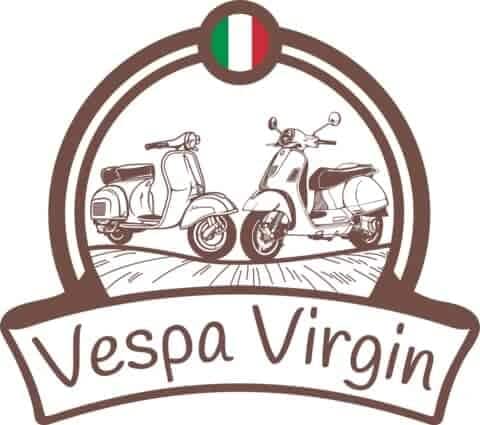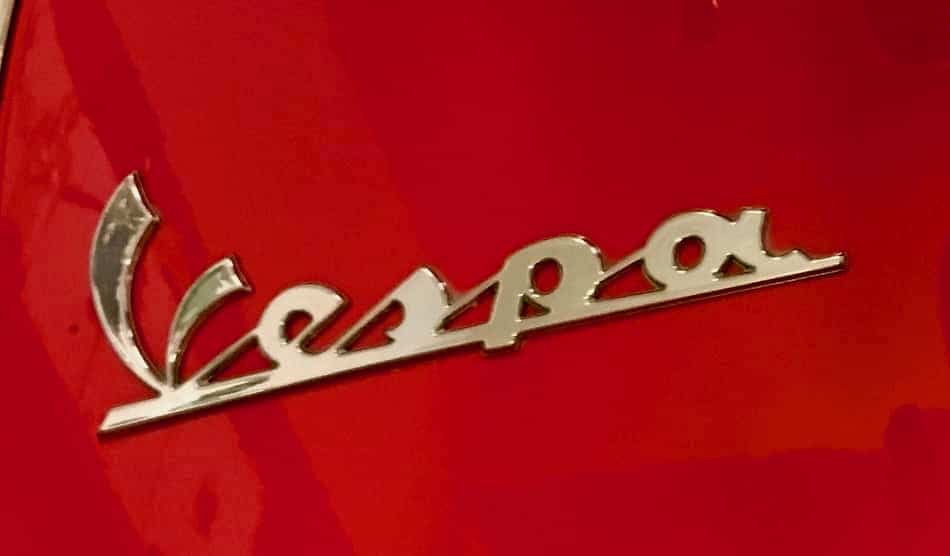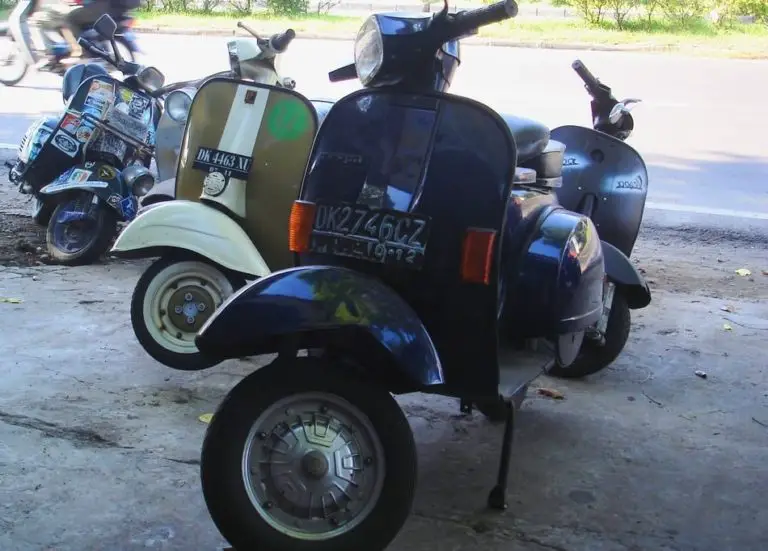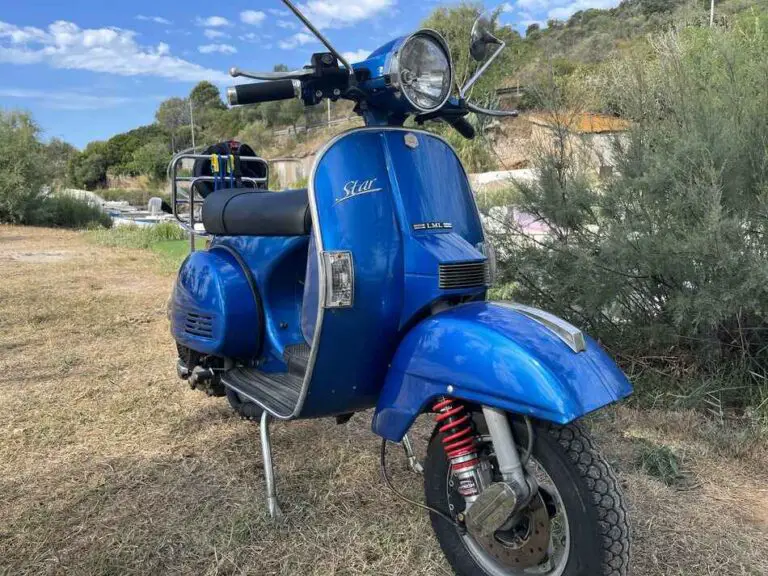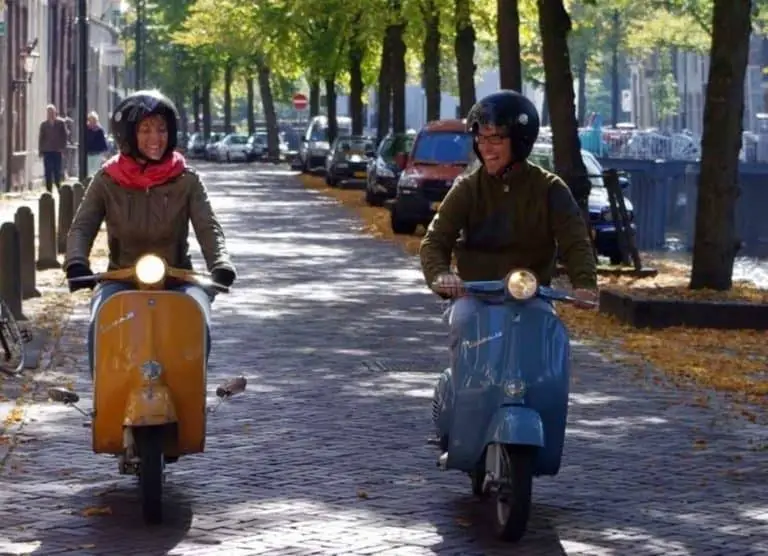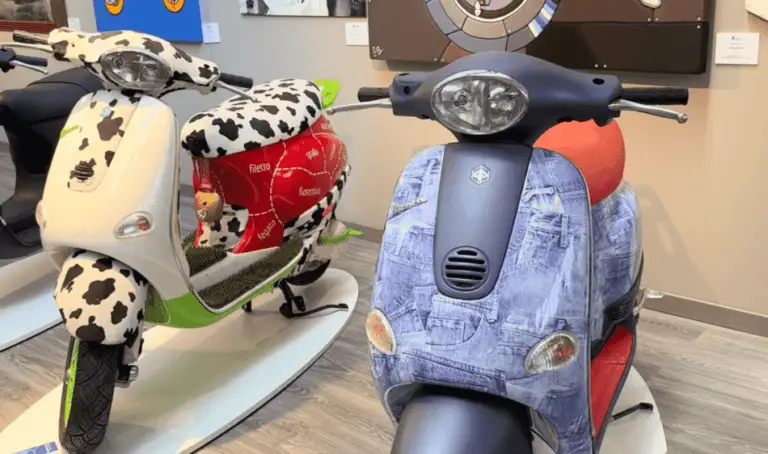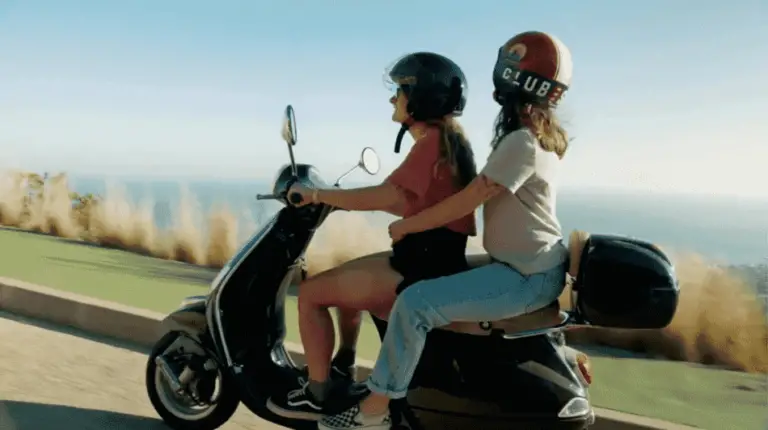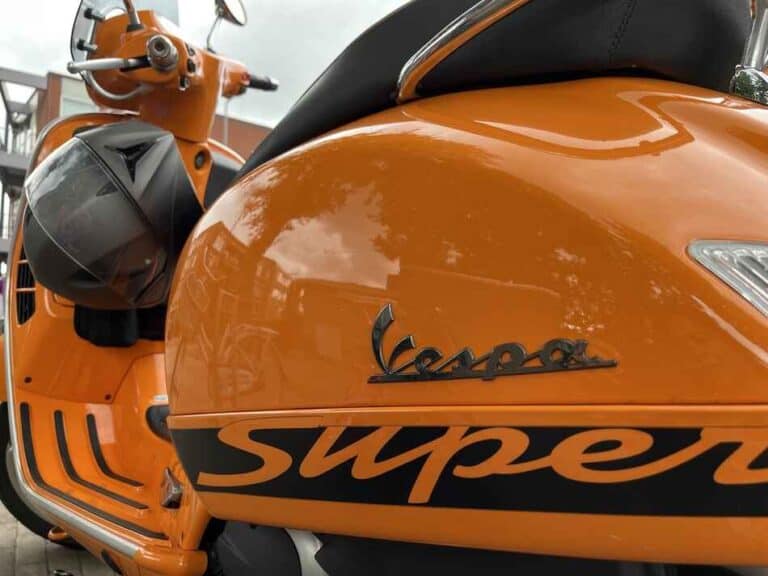Are Vespas Automatic Or Manual?
Cars, mopeds, and motorcycles come with manual gears or with an automatic transmission. In the case of the Vespa, it depends on the model. A Vespa with automatic gears is easier to drive and in my opinion ideal for the city.
That said, I enjoy driving a manual geared Vespa more as it gives me more control over the engine making it more fun to take it out for a drive. So which Vespa is manual and which one is automatic?
All modern Vespas (from 1996) have a continuously variable transmission (CVT), meaning they are automatic. The manual PX 2015 series is the only exception. Classic Vespas (till 1996) have a manual with 3 or 4 gears. The 125 PKS, 50 PKN, and the Cosa series are an exception. These are automatic.
If you are still unsure if you should go for a manual or automatic Vespa then continue reading. After owning both types of Vespas and renting them out to all types of customers around the world, I might be able to give you some points to consider. Let’s check out what the big differences are.
Do Vespas have a clutch?
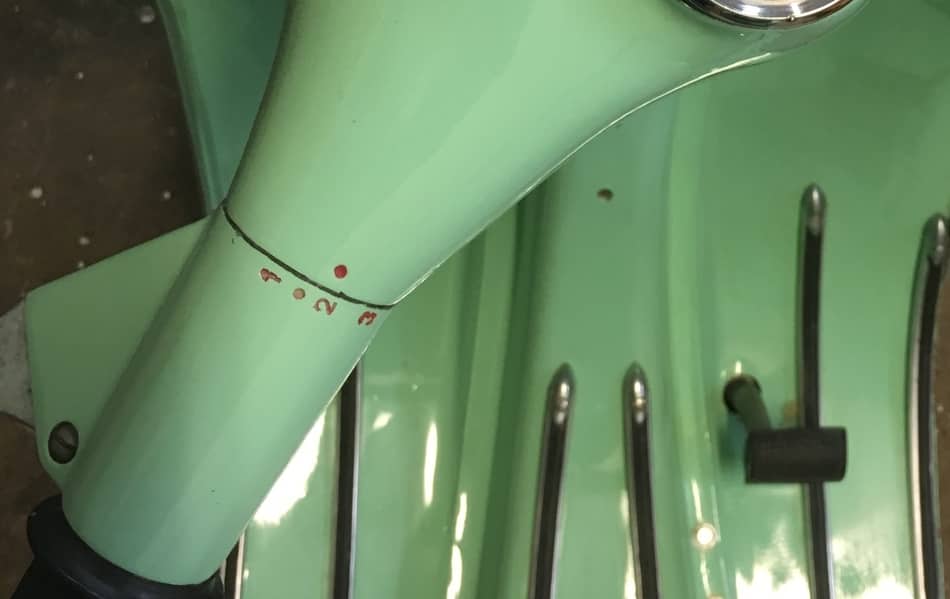
All classic Vespas with manual transmission gears have a clutch. The modern Vespas with automatic transmission gears do not have a clutch making it much more straightforward to drive.
If you are used to driving a car with manual gears, then it is easier to grasp the concept of driving a manual geared Vespa. You use the neutral to idle the engine, the first gear to drive off followed by the next gears to increase speed. If you haven’t ever driven a manual vehicle before, then it might be wise to get the hang of driving an automatic Vespa first before venturing into a classic Vespa.
While motorcycles and mopeds have the clutch located at the driver’s right foot, the clutch of a classic Vespa is located in the left-hand lever of the handlebar. So the lever located in your left hand is not the rear brake. The rear brake is on the right side of the floor panel.
To use the Vespa clutch you need to squeeze the lever in order to change gears. Then you need to turn the handlebar grip to the correct gear. There are either 3 or 4 gears plus a neutral indicated with a dot. The sequence of the gears is 1, neutral, 2, 3, and 4.
What are the Pros of the manual and automatic Vespa?
When you are shopping around for a Vespa, it is relevant to know if a Vespa is manual or automatic. To be honest, I fell in love with the classic Vespa for its design. I only realized it had manual gears just before I went to pick it up. I had to learn along the way how to drive it properly but over time it does come naturally.
In many countries, especially those in Europe, driving a vehicle with manual transmission gear is the first thing you learn. In the United States, this is different and drivers are more used to automatic.
There is a huge difference in driving between an automatic and a manual Vespa. A sense of feeling and existing experience will help a lot if you drive a manual Vespa the first time. If you don’t have any experience at all, it is easy to learn with some practice.
But in the end, your choice of Vespa model shouldn’t be solely based on the scooter being manual or automatic. In the case of a Vespa, both types of transmissions have other pros and cons too. Let’s have a look.
The Pros of the Automatic Vespas
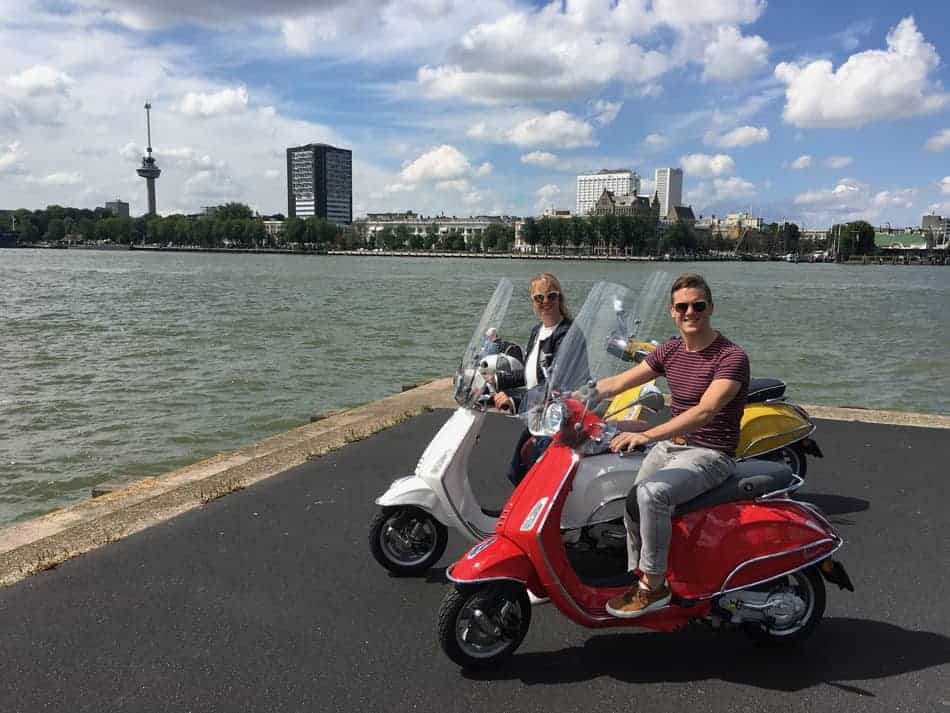
For an automatic, you just need to turn the handlebar throttle, and off you go. For a manual you need to practice a couple of times otherwise the engine will simply die on you if you make a mistake.
With an automatic Vespa, you can’t do anything wrong. It is a simple way of driving. If you use your manual gears incorrectly it will be fuel inefficient and your engine will endure a lot of ‘pain’.
Automatic Vespas come with bigger engines such as the Vespa GTS 300 that can reach 78mph/125km. You can go fast on the highways with this Vespa. Unlike the manual classic Vespas. The fastest classic models are the PX 200 and the Vespa Rally 200. Both can reach 60mph/100km.
Automatic Vespas have a 4-stroke engine which is more environmentally friendly. A manual Vespa has a 2-stroke engine. Oil needs to be added to the engine regularly and it isn’t environmentally friendly at all.
Automatic Vespas are more convenient when driving in cities. It makes ‘stop-and-go’ driving easy. Especially if you need to stop suddenly. With an automatic, you can do this quickly as you don’t need to change the gears to prevent your engine from stopping. When driving in the city with a manual Vespa you will be turning the gears every time you need to stop, drive off and take a turn. This makes driving in the city more difficult.
Even if you are an experienced driver, driving an automatic Vespa is safer than a manual. Your focus is only on the traffic and road conditions while on a manual Vespa you need to pay attention to the gears too.
The Pros of the Manual Vespas
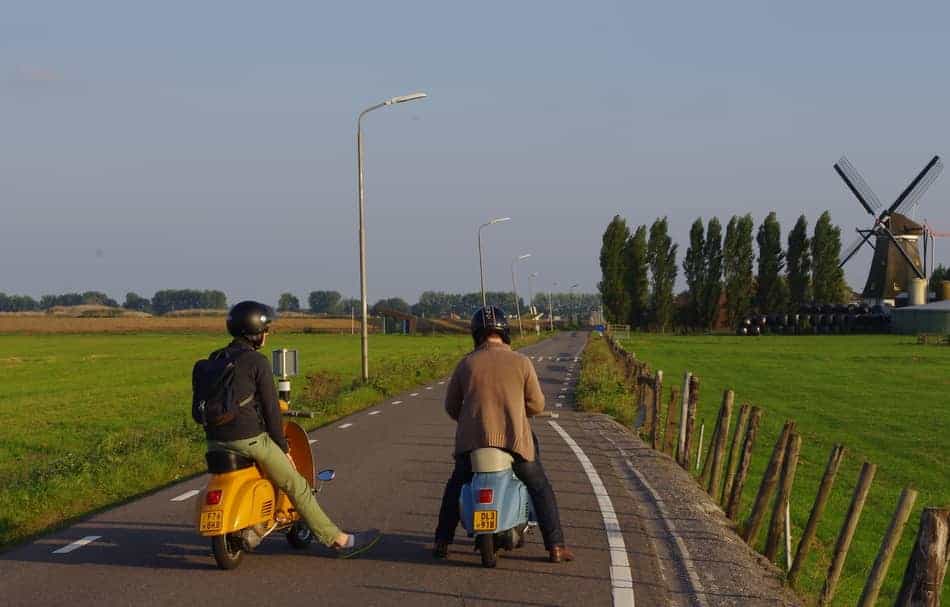
Vespas with manual transmission gear are classics. These are unique and beautiful motorbikes. Modern Vespas are automatic. While their style is still very attractive, in my opinion, nothing beats the looks of a classic Vespa.
Driving a manual Vespa feels like you are consciously taking the Vespa out for a ride. Some drivers would describe it as ‘less boring’ than driving an automatic. An automatic is pretty straightforward, you do not need to do much to get from A to B.
Vespa drivers who love the thrill of gaining speed will feel more engaged with a manual Vespa than an automatic. The driver is the one who decides when to switch gear once the engine accelerates on a manual. This is not the case with an automatic.
Manual Vespas are easy to maintain. If there is trouble in the gearbox or the cable breaks, it is easier to repair than an automatic Vespa.
| Pros Automatic Vespa | Pros Manual Vespa |
| Easier and safer to drive | unique vehicle |
| Vespa models have more advanced technology | more sense of engine control |
| Choice of bigger engines | the ‘simple’ engine technology makes it easier to repair |
| more environmentally friendly |
It comes as no surprise that the automatic Vespa has more winning points compared to the manual Vespa. The automatic Vespa is a modern vehicle of which the newest models have better technology and safety aspects. They are more equipped to drive in today’s busy traffic and they meet the expected safety standards.
Should I choose a manual or automatic Vespa?

After listing all the differences between manual vs automatic Vespas it might be easier to make a choice. But from my own experience, I noticed that once you have fallen for a classic Vespa you just accept the ‘downsides’ of a manual. You just don’t want anything else (if the law applies and you have the correct license of course).
However, if you are not an experienced motorcycle driver it is wise to start off with an automatic. Once you feel confident driving on two wheels through busy traffic then you can always consider going for a manual classic Vespa.
In the end, the most important point when choosing between a manual and automatic is to think about where and how you will be driving your Vespa. It is safer and more comfortable to drive a modern automatic Vespa on highways. This is actually also the same for those driving in cities. You can focus more on the traffic around you than on a manual.
Classic Vespas shouldn’t be your main daily vehicle yet more a hobby on which you can go touring when the sun is shining on your day off. Leave heavy traffic behind you and seek little countryside roads while hearing your Vespa comfortably running in the correct gear.
